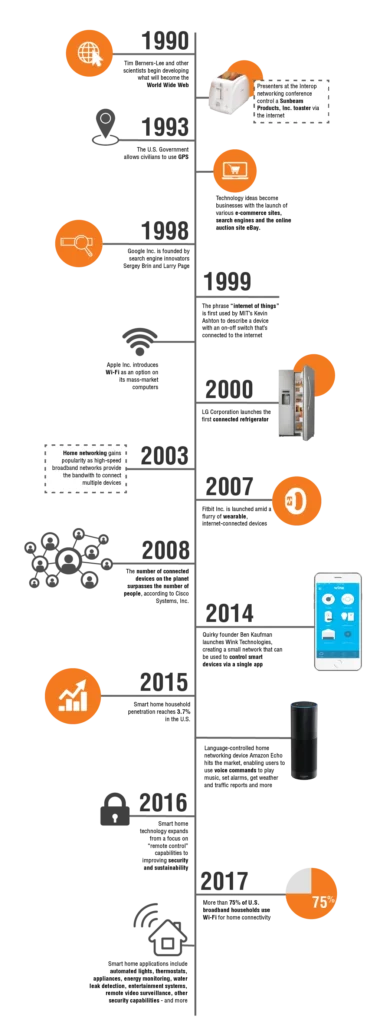The Evolution of Smart Home Technology has revolutionized the way we live, with advancements in home automation, connectivity, and convenience. From the early days of simple remote-controlled devices to the integration of AI and IoT, smart home technology has come a long way. Today, smart homes are equipped with cutting-edge features such as voice control, energy management, and security systems, making them more efficient and secure than ever before.
As smart home technology continues to evolve, it is fascinating to see how it is shaping the future of living spaces. The emergence of virtual assistants, smart appliances, and interconnected ecosystems has created a seamless and personalized experience for homeowners. Moreover, the integration of renewable energy sources and sustainability features has made smart homes more eco-friendly and cost-effective. With the ongoing development of smart home technology, the possibilities for innovation and improvement seem endless.
The Early Days of Smart Home Technology
In the early days of smart home technology, the concept of a connected home was limited to basic automation such as programmable thermostats and remote-controlled lighting. These early systems were often expensive and required professional installation, making them inaccessible to the average homeowner. However, they laid the groundwork for the development of more advanced smart home devices.
As technology continued to advance, smart home devices began to integrate with the internet, allowing for remote access and control via smartphones and other connected devices. This marked the beginning of the modern smart home era, as consumers started to embrace the convenience and energy-saving potential of these new technologies.
The Rise of Interconnected Devices
With the proliferation of Wi-Fi and Bluetooth technology, smart home devices became increasingly interconnected. This allowed for seamless communication between different devices, enabling the creation of comprehensive smart home ecosystems. Consumers could now control everything from their thermostats and lighting to their security systems and kitchen appliances through a single, unified interface.
Interconnected smart home devices also paved the way for the development of voice-controlled assistants such as Amazon’s Alexa and Google Assistant, which further streamlined the user experience. These assistants allowed users to control their smart home devices using natural language commands, making the technology even more accessible to a wider audience.
The Integration of Artificial Intelligence
As artificial intelligence (AI) technology advanced, it began to play a more significant role in smart home devices. AI-powered systems could learn and adapt to user behavior, automatically adjusting settings to optimize comfort and energy efficiency. For example, a smart thermostat equipped with AI could learn the homeowner’s temperature preferences and adjust the settings accordingly, without the need for manual programming.
AI also enabled the development of advanced security systems capable of analyzing and identifying potential threats in real-time. These systems could distinguish between normal household activity and suspicious behavior, providing a higher level of security and peace of mind for homeowners.
The Expansion of Smart Home Ecosystems
As smart home technology continued to evolve, the range of compatible devices and systems expanded significantly. Homeowners could now choose from a wide variety of smart appliances, entertainment systems, and health monitoring devices, all of which could be integrated into their existing smart home ecosystems. This expansion allowed for greater customization and personalization, as individuals could tailor their smart homes to meet their specific needs and preferences.
Furthermore, the development of open-source platforms and interoperability standards facilitated the seamless integration of devices from different manufacturers, ensuring that consumers were not locked into a single ecosystem. This interoperability encouraged innovation and competition, ultimately driving the advancement of smart home technology as a whole.
The Future of Smart Home Technology
Looking ahead, the future of smart home technology holds even greater potential. Advancements in areas such as 5G connectivity, edge computing, and the Internet of Things (IoT) will continue to push the boundaries of what is possible within the smart home space. These developments will enable faster and more reliable communication between devices, as well as the ability to process and analyze data at the edge of the network, leading to more responsive and intelligent smart home systems.
Furthermore, as concerns about energy efficiency and environmental sustainability grow, smart home technology is likely to play a key role in helping homeowners reduce their carbon footprint. From smart energy management systems to water-saving devices, the smart home of the future will prioritize sustainability and environmental responsibility.
The Impact of Smart Home Technology on Daily Life
Smart home technology has had a profound impact on the way people live and interact with their living spaces. It has not only enhanced convenience and comfort but also improved safety and security for homeowners. The ability to remotely monitor and control various aspects of the home provides peace of mind and a greater sense of control over one’s surroundings.
Additionally, smart home technology has the potential to enable independent living for elderly or disabled individuals, allowing them to manage everyday tasks more easily and maintain their autonomy. This has significant implications for the future of healthcare and aging in place, as smart home technology continues to advance and become more accessible.
Challenges and Considerations in Smart Home Technology
While smart home technology offers many benefits, it also presents challenges and considerations for homeowners. Privacy and data security are top concerns, as the proliferation of interconnected devices raises the risk of potential breaches and unauthorized access to personal information. Additionally, the complexity of smart home systems can be daunting for some users, requiring a certain level of technical knowledge to set up and maintain.
Furthermore, as smart home technology becomes more prevalent, there is a growing need for industry standards and regulations to ensure interoperability, security, and consumer protection. Addressing these challenges will be crucial in fostering continued trust and adoption of smart home technology among consumers.
The Role of Smart Home Technology in Real Estate
Smart home technology is increasingly becoming a significant factor in the real estate market. Homebuyers are placing greater value on properties equipped with smart home features, viewing them as more modern, convenient, and energy-efficient. As a result, real estate developers and agents are recognizing the importance of integrating smart home technology into both new construction and existing homes to attract potential buyers and increase property value.
From smart lighting and climate control to integrated security systems, smart home features can differentiate a property in a competitive market and appeal to a wide range of buyers, from tech-savvy individuals to those seeking a more connected and automated living experience.
| Decade | Technology | Description |
|---|---|---|
| 1970s | X10 | First widely used home automation technology using power line communication |
| 1980s | Clap On/Clap Off | Simple sound-activated light switches became popular |
| 1990s | Wireless Home Security Systems | Wireless technology allowed for easier installation and monitoring |
| 2000s | Smart Thermostats | Programmable thermostats with internet connectivity for remote control |
| 2010s | Voice Assistants | Integration of AI-powered voice assistants for smart home control |
| 2020s | Smart Home Ecosystems | Interconnected devices and systems for seamless automation and control |
The evolution of smart home technology has progressed from simple sound-activated switches to interconnected ecosystems of devices and systems that can be controlled through voice commands and mobile apps. This progression has led to greater convenience, energy efficiency, and security for homeowners.



